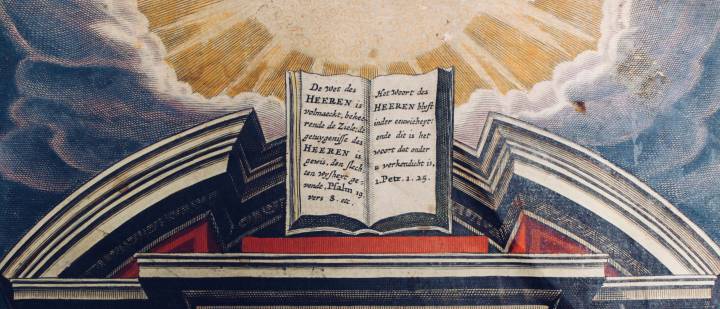
In the first sessions of the Synod of Dordt in November 1618, before the delegates of the Synod even addressed the divisive Arminian controversy, they joined together to commission a new Bible. Published nineteen years later in 1637 after a laborious translation process, the Statenvertaling (States' Translation) was the realization of the initial work of the Synod of Dordt.
But the wait for a complete Dutch Bible that drew from the original languages of Scripture had been much longer than the nineteen years between Dordt and 1637. Since the Reformation, and even the Middle Ages, the residents of the Low Countries had read the Bible, but inquisition and persecution, a revolt from Spain and controversy with the Remonstrant (Arminian) faction in the national church, delayed the translation and publication of a complete Dutch Bible translated from the ancient languages.
Medieval Bible Reading in the Low Countries
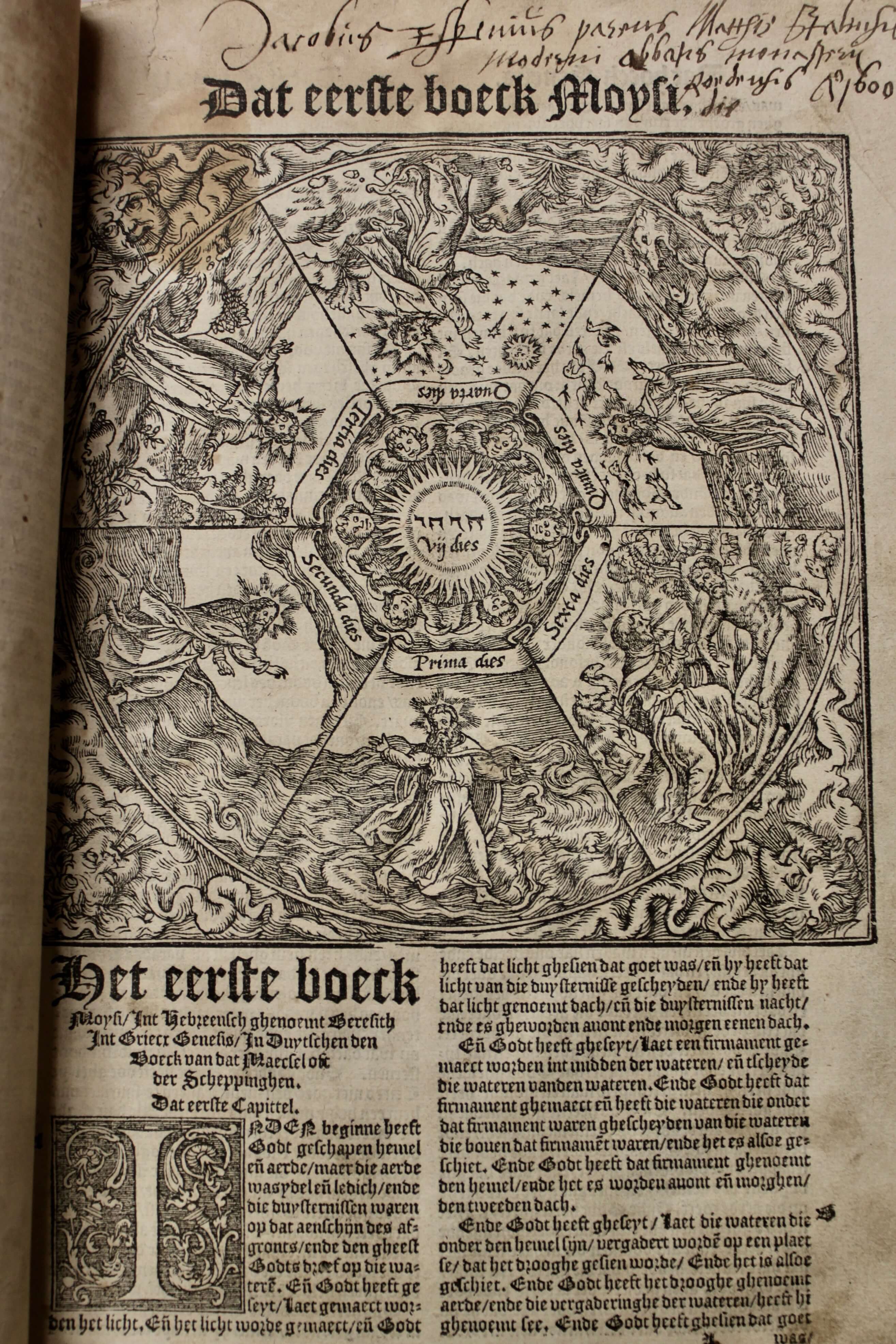
The Statenvertaling is considered one of the best translations of the Reformation era and remained the preeminent Dutch Bible well into the twentieth century. New Dutch Bibles (published in 2004 and 2010) have recently replaced the Statenvertaling as the primary Dutch Bibles in use. Even these translations, written centuries later, use the seventeenth century Statenvertaling as their starting point—attesting to the lasting quality and continuing influence of the work of the Synod of Dordt and the translators.
Before the Statenvertaling and the Reformation, the Low Countries had a tradition of lay readership in the Middle Ages. The Devotio Moderna movement of popular religious enthusiasm in the fourteenth century argued that reading the Gospels was necessary for learning to live like Jesus Christ and the Apostles. Beguines, Beghards, and other pious lay groups inspired by the movement often had parts of the Bible translated into vernacular. Rather than lay readership being scandalous to the institutional church, in the Middle Ages it was sometimes encouraged by clergy within the church. Monks both translated and copied works as an act of spiritual meditation or for a rich patron. Some clergy even recommended that their parishioners read the Bible on their own time.
Protestant Bibles and the Challenge of the Reformation
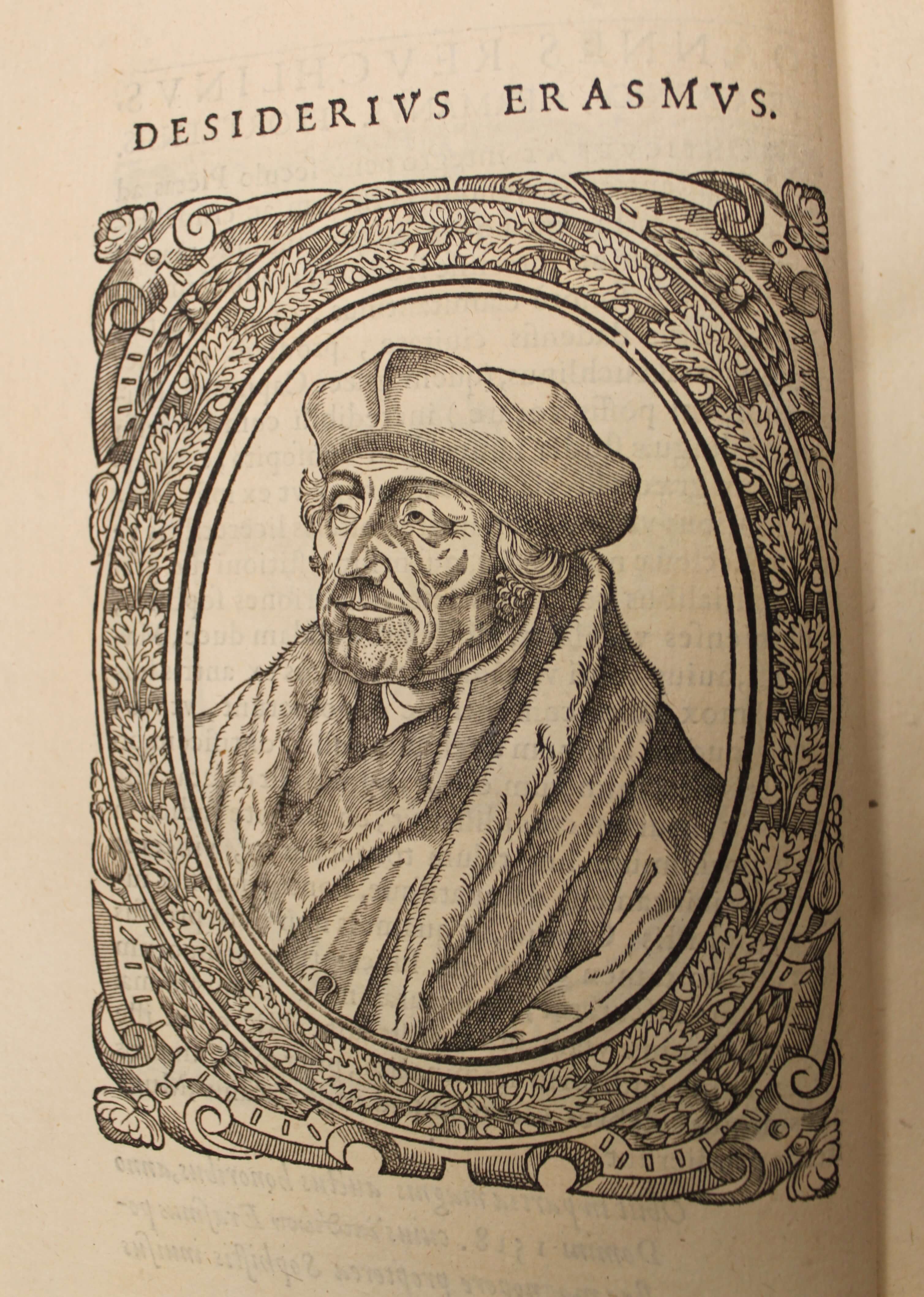
The Roman Catholic Church did have an official Bible translation—the Latin Vulgate, first translated by the Church father Jerome in 405 CE—which it upheld as the exclusive Latin authority for the Bible. In the fifteenth and sixteenth century, with the rise of interest in texts from antiquity, scholars called humanists began translating the text of the Bible from the original Hebrew and Greek. A Dutchman, the famous Erasmus of Rotterdam, was deeply influential in this movement, notably for his translation of the New Testament from Greek into Latin. While vernacular Bibles and other aids to piety for lay people—like block prints of biblical stories, parts of the gospels, and books of hours—had been circulating for centuries, the Reformation Bible provided a new challenge. It was scrupulous, trying to cling tight to the original languages and meaning—which Luther argued was the only infallible guide for religious belief and practice—and even pointing out grammatical and linguistic errors in Jerome’s translation.
As the Reformation progressed and Protestant groups split, more Bible translations appeared. Luther and his colleagues in Wittenberg produced a complete Bible in German in 1534. By 1611 the national church in England had the King James Bible. Sometimes the Bibles were commissioned and written to be the first complete vernacular Bible from the original languages and other times to counteract the influence of the biblical translations of other groups. For instance, the King James Bible was meant to counteract the popularity of the Geneva Bible (influenced by Calvin) in England.
Conflict and Commissioning
Following the Reformation, the Dutch provinces were an unstable place for Protestant belief and therefore, Protestant Bible translation. The Dutch Inquisition, established by Charles V of Spain in 1521, published an index of prohibited books. Although the index was inconsistently enforced, Jacob van Liesveldt, who wrote a complete Dutch Bible translation working from Luther’s text, was put to death in 1545 on the charge of heresy. Perhaps because of this context, Dutch translations were mostly fragmentary or secondary translations, working from the Latin Vulgate, the German Luther Bible, and even Erasmus’ New Testament.
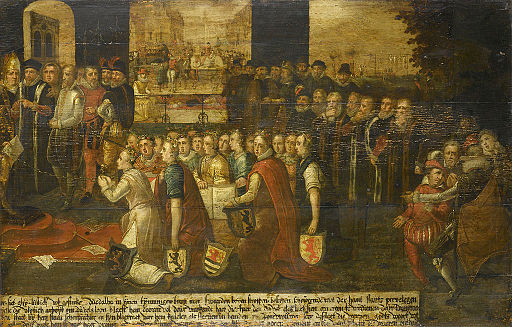
The Reformed churches of the Netherlands began to form around 1544, but because of the persecution experienced by Protestants and war with Spain, the churches met in exile at the 1571 Synod of Emden. The standard Bible translation within the Reformed community at that time was the Deux Aes Bible that combined a number of secondary translations. At the Synod, a group of refugees from Cologne explicitly stated the need for a new Dutch translation, an appeal that was later repeated at the 1586 synod in The Hague. The trying political situation in the Netherlands prevented further synods from meeting and hampered the translation of a new Bible. Finally, after the declaration of the Twelve Years Truce between the Netherlands and Spain and a coup by Maurice of Nassau that turned the political tide towards the Counter-Remonstrants (Orthodox Calvinists) within the Reformed Church, the States General called a national synod together. The Synod of Dordt met between November 1618 and May 1619. The first issue on the agenda at the Synod was the translation of a new Bible. Johannes Bogerman, the president of the Synod and an expert in biblical languages, brought up the King James Bible as well as Spanish and Italian translations that worked from the original languages, pointing out the framework the Dutch Bible should follow. The delegates unanimously voted to commission the new Bible.
While the commissioning was unanimous, the delegates debated what to do with the apocrypha. Lay people read the apocrypha for centuries before the Reformation, and many Reformed churches accepted the apocryphal texts. But Franciscus Gomarus (the late Arminius’ opponent on the faculty at Leiden), and Jean Diodati, (Beza’s student and an Italian biblical translator), were against it. The apocrypha, they argued, conflicted with scriptures and was dogmatically wrong. After debate, the Synod of Dordt decided that the translators should place the apocrypha at the back of the Bible with a preface warning the reader.
The Translation Process
The Synod of Dordt stipulated that the translators should be both scholarly and pious. To balance out the Dutch vernacular dialects, the translators were ministers from different provinces. The revisors included a number of theologians as well as parish ministers. Although the Netherlands was a center of biblical scholarship and philology at the time, the pastor Henricus Alting doubted he could translate the Old Testament Hebrew. Johannes Bogerman told him, “an average knowledge will suffice...the solid explanation of a biblical place is far more important than the conjectures of a thousand critics.”[1]
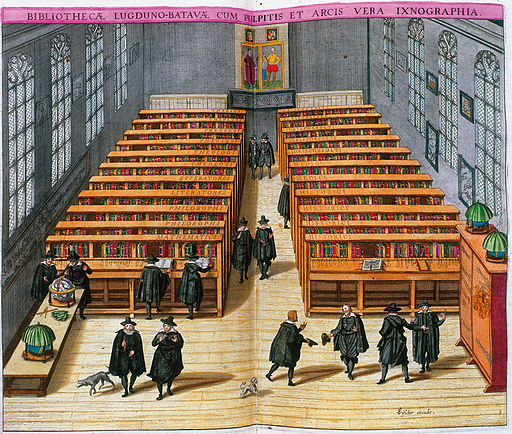
The translators of the Statenvertaling oscillated between two poles of biblical interpretation: the belief that scriptural meaning was self-evident and the fear, fresh from the recent Arminian debate, that scripture could be read in vastly different ways. Their responsibility thus became to translate and gloss the texts to encourage right belief, but not treat the Bible as cryptic and, therefore a threat to right belief. The Synod of Dordt helped by providing a guide for the translators: if the original languages could not be meaningfully translated, the translators were to note this in the margin; each book of the Bible would contain a clear summary of the contents; and finally, the translators could add explanations in the margins to justify their translation but should not diverge into elaborate doctrinal discussions.
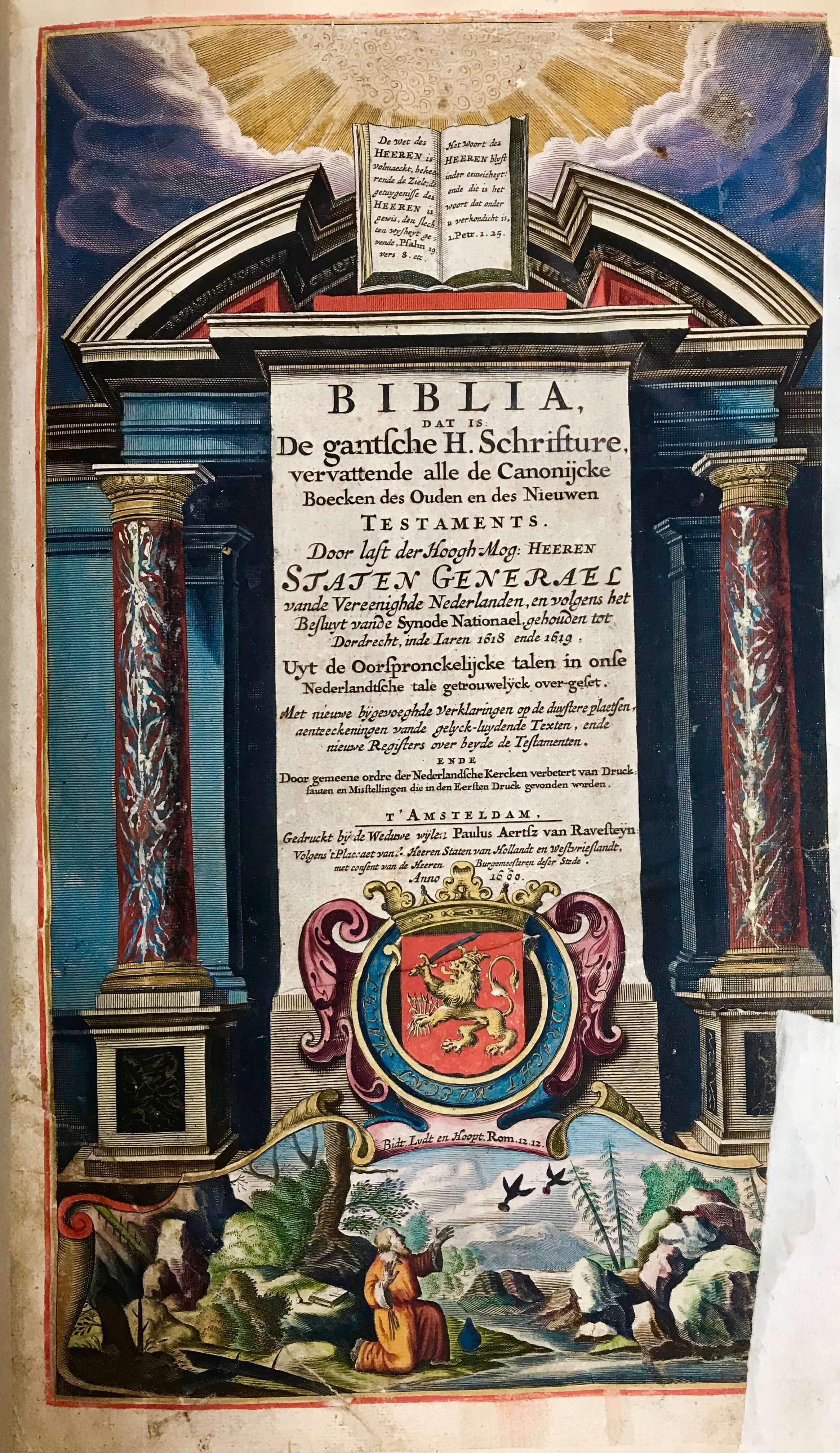
The translation process, like the Synod, was a process of consensus with committees, voting, and months of labor. The meetings began in 1626 in Johannes Bogerman’s house in Leiden and continued on despite the death of multiple translators and the 1635 plague. The translators (six of them, three for each Testament) worked on a section of translation at home, before meeting with each other to discuss their work. Every sentence was agreed upon with absolute consensus and then moderated by a group of twenty revisers. Caspar Sibelius, a New Testament translator, later recounted how the laborious process affected Festus Hommius, a fellow translator. “He had grown old,” Sibelius wrote of his friend, “burdened, and tired, and [the] sustained labor had broken his strength.”[2] Finally, after a delay in funding, the Statenvertaling was published in 1637. In their introduction, the States General declared the Bible, “fitting, conformably to the example of the primitive Church, in the time of the Fathers, and likewise to that of our Neighbor and other Reformed Kingdomes”—the finished Bible reached back to ancient times and the early church, yet it spoke to the current age and Reformed republic.
The Continued Effect of the Statenvertaling
Within Calvin University’s rare book collection, there are over seventy-five Statenvertaling Bibles. Some of the Bibles have handwritten family trees, tracing lineages from the mid-seventeenth century to the late-twentieth. Many of them were donated by families in West Michigan, who at some point transported the Bibles from the Netherlands to the United States. Some of the Bibles are small enough to fit within a handbag. Others are huge and heavy, with thick wooden covers and brass clasps. Some Bible have large maps that fold out, depicting Jerusalem, the world, or the Holy Land, and diagrams of the construction of the ark of the covenant, while others have only the standard illustrated lettering at the start of every book of the Bible and the filigreed “finis” at the end. The variety of Statenvertaling Bibles sampled at the Calvin University Hekman Library attests to the translation’s popularity and versatility. After its initial 1637 publication by Paulus Aertsz van Ravesteyn in Leiden, the Statenvertaling was reprinted twenty-two times before the turn of the eighteenth century. For the next two centuries, the Statenbijbel was the most-owned book in the Netherlands.
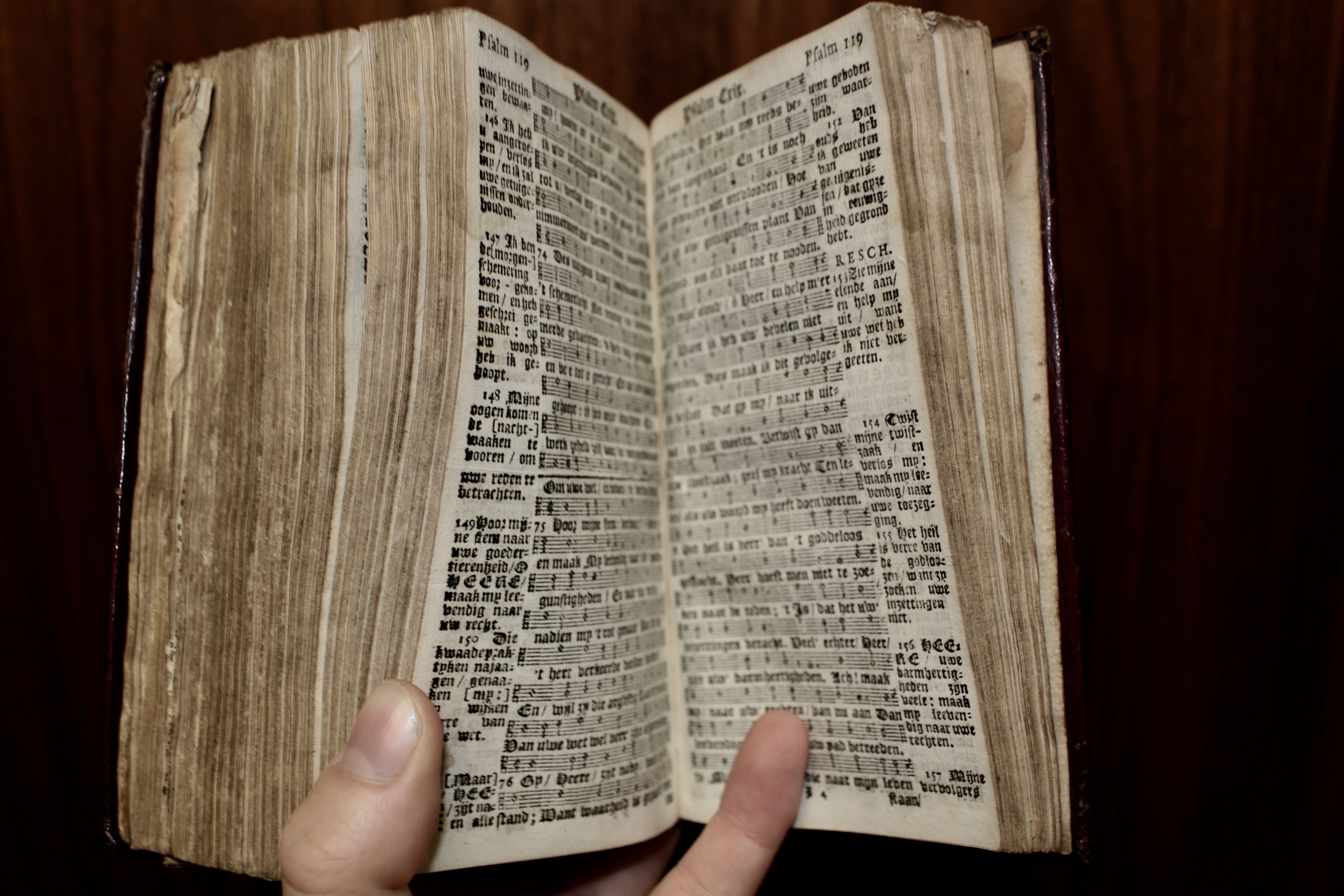
Beyond communicating the message of the Bible, the Statenvertaling played a wider role in the confessionalization of Dutch society. Many Statenvertaling Bibles contained psalters in the back to guide believers in worship and personal piety. So-called Frauen Bijbels were given as gifts to women upon marriage, showing the social significance of the Bible. The language itself of the Statenvertaling, formed carefully by the translators from across all the provinces, helped create the standard Dutch language still used today. The Philadelphia Statenvertaling in Calvin University’s collection contains an entire catechism and multiple Reformed confessions that continued the work of promoting Dutch Reformed piety even beyond the Netherlands and well into the nineteenth century.
The historian Jonathan Israel, in his seminal work on the Dutch Republic, calls the Netherlands during the time of revolt an “ecclesiastical vacuum” in which most people held no confessional affiliation and Christianity did not shape their daily lives.[3] Decades later, the story of the Statenvertaling is quite different: it shows a Dutch Republic galvanized by the Arminian controversy, eager to fund and promote orthodoxy, and a people willing to adopt the Statenvertaling—a product of the Reformed Church and the States General—into an intimate and personal part of their lives for centuries.






